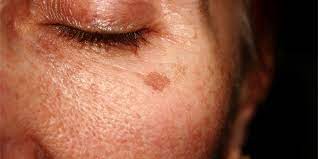
Racial pigmentation
Racial pigmentation refers to the variation in skin color among individuals of different races or ethnic groups. It is determined by the amount and type of melanin, the pigment that gives color to the skin, hair, and eyes. Melanin is produced by cells called melanocytes, which are found in the outer layer of the skin. The more melanin present in the skin, the darker the skin color. Factors such as genetics, sun exposure, and certain health conditions can affect the amount of melanin produced in the skin.
What Is Racial pigmentation:
Racial pigmentation refers to the variations in skin color among different human populations. It is determined by the amount and type of melanin, a pigment produced by cells in the skin called melanocytes. People with darker skin have more melanin, while people with lighter skin have less. Factors such as genetics, UV radiation exposure, and certain health conditions can also affect skin pigmentation.
What We Should Know About the What Is Racial pigmentation:
It’s important to note that racial pigmentation is a natural variation within the human species and should not be used as a basis for discrimination or prejudice. Additionally, it’s important to understand that racial categories are social constructs and not based on scientific or biological definitions, and that a person’s racial identity is not solely determined by their physical appearance. It’s also important to note that skin pigmentation can have both positive and negative effects on an individual’s health. For example, darker skin provides more protection against sun damage and skin cancer, but can also make it more difficult to detect certain skin conditions such as skin cancer.
Racial pigmentation How To Treat Them?
Treatments for racial pigmentation vary depending on the specific condition or concern. Some common treatments for hyperpigmentation (darker areas of skin) include:
- Topical creams and gels containing ingredients such as hydroquinone, kojic acid, or azelaic acid, which can help to lighten the skin.
- Chemical peels, which use a solution to remove the top layer of skin, revealing brighter, more even-toned skin underneath.
- Microdermabrasion, which uses a fine diamond tip or other abrasive material to remove dead skin cells and promote cell turnover.
- Laser therapy, which uses light energy to target and destroy the melanin-producing cells in the skin.
- Sunscreen and protective clothing are also important in preventing further hyperpigmentation and protecting the skin from UV rays.
It’s important to note that these treatments should be done under the supervision of a qualified dermatologist or skincare professional. They should also be used with caution as they may have side effects and not work for everyone. It’s also important to note that some treatments like skin lightening may not be appropriate for everyone and some ingredients may be banned in some countries, it’s always better to consult a qualified professional before using any product or treatment.

If you want to get amazing benefits by using this link
Racial pigmentation Conclusion:
In conclusion, racial pigmentation refers to the variations in skin color among different human populations, which is determined by the amount and type of melanin produced by the skin. While it is a natural variation within the human species, it should not be used as a basis for discrimination or prejudice. Treatments for hyperpigmentation, such as topical creams, chemical peels, microdermabrasion, laser therapy, and sunscreen are available, but they should be done under the supervision of a qualified professional and used with caution as they may have side effects and not work for everyone. Additionally, it’s important to understand that racial categories are social constructs, and a person’s racial identity is not solely determined by their physical appearance.




